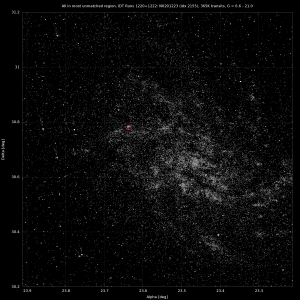Extra-galactic Observations with Gaia
Friday, 21 April, 2017
 M33 Galaxy, also known as the Triangulum Galaxy, as observed by Gaia. (Image credit: ESA/Gaia/DPAC/IEEC-UB)
M33 Galaxy, also known as the Triangulum Galaxy, as observed by Gaia. (Image credit: ESA/Gaia/DPAC/IEEC-UB)
Gaia has been scanning the sky for more than 1000 days, since the start of the routine scientific operations phase on 25 July 2014. More than 35 TB of scientific data were gathered until now, close to 70 billion object transits through the focal plane were observed and an impressive 686 billion positional or astrometric measurements, 146 billion brightness or photometric data points, and 13.6 billion spectra were recorded until now.
The instruments onboard Gaia are measuring any object seen by its telescopes, as long as the objects appear bright and sharp enough to the autonomous source detection system. This detection system does not (and cannot) distinguish between galactic and extra-galactic stars. Hence, thanks to its excellent angular resolution and sensitivity, Gaia is not only doing the most complete and accurate census of our own Galaxy, but also it is able to observe individual stars in other, nearby galaxies.
An example of these extra-galactic capabilities of Gaia is shown in the figure. In this case it is the M33 Galaxy, some 2.4 million light-years away.
You’ll find further details on ESA’s Gaia mission.